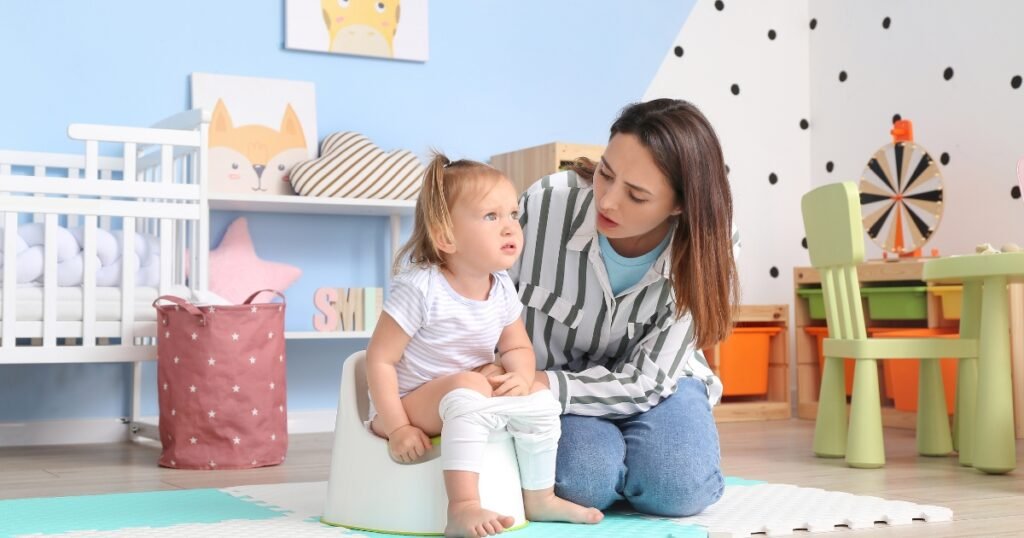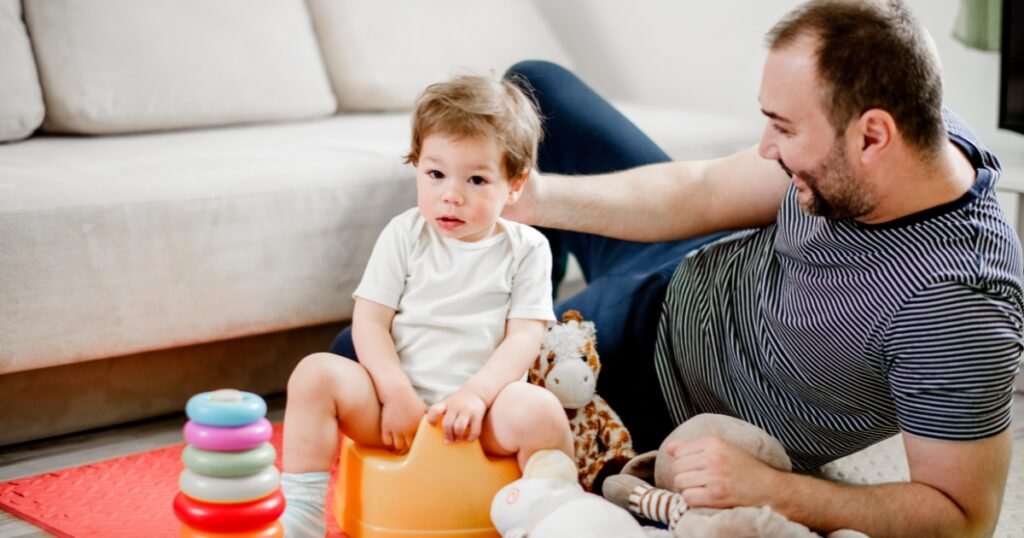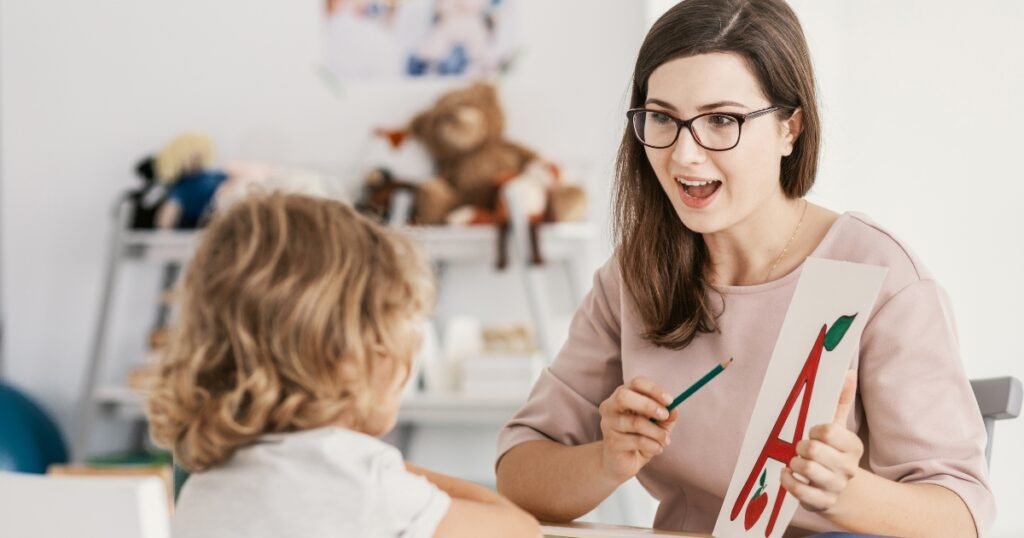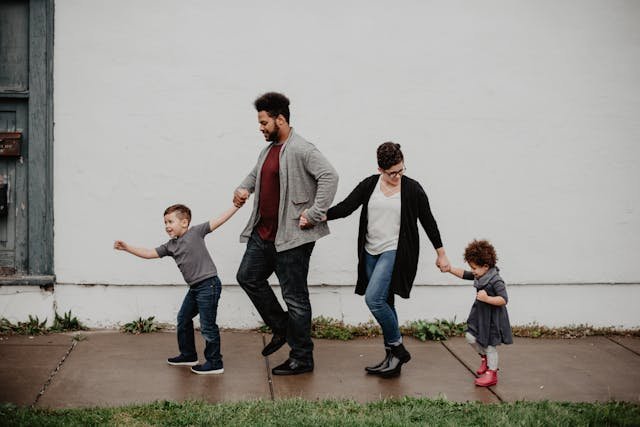Table of Contents
How do you potty train a 4-year-old nonverbal autistic child?: 5 Effective Key Strategies

Discover how do you potty train a 4-year-old nonverbal autistic child with our 5 effective key strategies. Learn tailored approaches to support your child’s journey.
Potty training a nonverbal autistic 4-year-old requires patience, understanding, and specialized strategies tailored to their unique needs. Here’s how we can support them through the process:
- Establish Routine: Nonverbal autistic children often thrive on routine and predictability. We should establish a consistent schedule for taking the child to the bathroom. This could be every 20-30 minutes or based on signs that they need to go. Consistent timing helps the child learn the connection between the urge to go and using the potty.
- Utilize Visuals: Since nonverbal children may find visual cues easier to understand, we can use pictures and pictograms to indicate the steps of using the toilet. Placing a visual schedule in the bathroom can guide them through the process of undressing, going to the toilet, cleaning themselves, and washing their hands.
- Non-Verbal Communication: We must be attentive to the child’s non-verbal cues, as this is their primary form of communication. It’s essential to recognize signs like fidgeting or certain postures that indicate they need to use the bathroom and respond promptly to these cues.
- Positive Reinforcement: When the child successfully uses the potty, we should provide immediate and enthusiastic praise. Rewards, such as stickers or a favourite activity, can reinforce the behaviour. However, we need to be careful that the rewards don’t become the sole motivation for using the toilet.
- Adapt to Sensory Issues: We must be conscious of any sensory issues related to the bathroom experience that may discomfort the child. For example, the sound of the flush or the feeling of toilet paper may be distressing. Introducing these sensory experiences gradually and offering alternatives can be helpful.
Preparation is Key: Getting Your Child and Environment Ready

Potty training a nonverbal autistic 4-year-old requires careful preparation of both the environment and the child. Firstly, we need to get our child accustomed to the idea of using the potty. This can begin with social stories or picture schedules that illustrate the process. By consistently reviewing these materials, our child can become more comfortable with the concept before we start.
Next, we should select a potty chair that our child feels comfortable using. It should be stable, the right size, and if possible, one that our child shows interest in. Sometimes, letting them pick out the potty can make a big difference in their willingness to use it.
Here are some additional steps we can take to ready the environment:
- Simplify clothing: Choose clothing items that are easy to pull down and up. This minimizes frustration and obstacles when the urge to go strikes.
- Easy access: Place the potty in a consistent, readily accessible location.
- Create a routine: Regularly schedule potty breaks, integrating them into our child’s daily routine to establish a pattern.
- Visual cues: Use visual cues such as signs or lights to direct our child to the potty when it’s time.
- Additional supplies: Keep extra supplies handy, including wipes, a change of clothes, and hand sanitiser.
Consistency and patience are vital. We should also be prepared for setbacks and understand that every child progresses at their own pace. By creating a supportive and stress-free environment, we’re laying the groundwork for a successful potty-training experience.
Recognizing Readness Signals in Non-Verbal Autistic Children

Recognizing readiness signals in non-verbal autistic children is pivotal for a smooth and effective potty training process. Because they may not express their needs verbally, observing their non-verbal cues becomes essential. Here’s what we can look for:
- Physical Signs: Notice if they are dry for a few hours at a time or after naps, which indicates bladder control. Observing if they have regular bowel movements at certain times can also help us establish a routine.
- Behavioural Cues: Some children might touch their diaper area or show signs of discomfort when wet or soiled. Others may pause in their activity or retreat to a corner or another room when they need to go.
- Facial Expressions: Pay attention to their facial expressions. Grimacing or a look of concentration could mean they’re ready to use the potty.
- Interest in Others’ Bathroom Habits: Their interest in the bathroom habits of siblings or parents can also be a readiness signal. They may follow others to the bathroom or watch curiously during diaper changes.
- Body Language: Look for squirming, squatting, or fussiness that occurs with consistency before they need to go.
- Imitation of Toilet Behavior: If your child attempts to imitate toilet behaviour, this is a strong indicator that they’re ready for potty training.
By tuning into these non-verbal signals and responding consistently, we can better support our child’s potty training journey. Establishing a routine around these signs can build a foundation of consistency and trust that will aid in the process. Remember, patience and positive reinforcement are key.
Communication Strategies: Visuals, Symbols, and Signals

When potty training a nonverbal autistic child, traditional verbal instructions might not be effective. Therefore, we need to rely on nonverbal communication methods. Here are some strategies we can employ:
- Visual Schedules: We can create a visual timetable that maps out the day’s activities with an emphasis on potty times. Pictures can represent waking up, eating, playtime, and using the toilet. By consistently following this schedule, the child may begin to understand the routine associated with potty breaks.
- Picture Exchange Communication System (PECS): This is a form of augmentative and alternative communication (AAC) that we can use to help the child communicate their need to use the bathroom. Simple images or icons that represent the toilet can be useful for the child to hand over when they need to go.
- Social Stories: These are short, simple stories that explain social situations and appropriate responses. We can create a social story about using the toilet, which might include steps like recognizing the need to go, asking for help, using the toilet, and washing hands.
- Signal Devices: For some children, an electronic device or app that signals it’s time to try using the potty can be helpful. These timers can be set to go off at regular intervals to remind both us and the child that it’s time to try.
- Colour-Coded Cards: We can also use coloured cards or lights like green for go and red for a stop to indicate when it’s time to try to use the potty and when we’re taking a break.
Remember, it’s vital that we’re patient and consistent while using these tools. Each child is unique, and finding what works best may take some trial and error. The key is to keep the visuals clear, simple, and consistent.
Choosing the Right Potty Training Equipment
When it comes to potty training a 4-year-old nonverbal autistic child, selecting appropriate equipment that aligns with their specific needs is essential. Here’s how we can ensure the right fit:
- Potty Chair vs. Toilet Seat Adapter: We start by figuring out whether a standalone potty chair or a toilet seat adapter is more suitable. A potty chair can be less intimidating due to its size and is portable, making it easier for the child to access at any time. A seat adapter, on the other hand, requires less transition later as the child is already using the actual toilet.
- Stability and Comfort: Comfort is key to encouraging regular use. We look for a potty with a stable base to prevent tipping, which could be traumatic. A comfortable seat is equally important to ensure the child is willing to sit for as long as necessary.
- Visual Cues: For a nonverbal autistic child, visual cues can be incredibly helpful. We pick equipment that is colourful or has familiar characters to create a more inviting environment. Some potties have a visual cue when they’ve been used successfully, like a picture that changes colour with moisture, which can provide positive reinforcement.
- Sensory Considerations: We’re aware that children on the autism spectrum may have heightened sensory sensitivities. So, we avoid potties with excessive sounds or features that might cause discomfort or distress.
- Easy to Clean: Simplifying the clean-up process is beneficial for both the child and us. A potty that is easy to clean encourages consistency in hygiene practices and is less disruptive to the child’s learning process.
- Support Handles: Some children may need support while sitting or standing. Choosing a potty with handles gives the child something to hold onto, improving their sense of security during use.
- Step Stools: If we opt for a toilet seat adapter, a step stool is indispensable. It allows the child to climb up and down with ease and promotes independence.
By thoughtfully selecting potty training equipment that is compatible with our child’s comfort, sensory preferences, and learning style, we can create a conducive environment for successful potty training.
Developing a Consistent Routine for Success
When it comes to potty training a 4-year-old nonverbal autistic child, consistency is the key to success. We’ve learned that establishing a regular and predictable routine helps create a sense of security and understanding for the child. Here’s what we consider when developing a routine:
- Establish Fixed Times: We designate specific times throughout the day for potty attempts, ideally when the child is likely to need to go, such as after meals or drinks. This predictability aids in harmonizing the body’s natural timings with the potty routine.
- Visual Schedules: We use visual schedules, employing symbols or pictures that represent different parts of the potty routine. These can act as a guide for the child and help prompt action without relying on verbal cues.
- Consistent Cues: We employ the same cues or signals, such as a specific hand gesture or a visual sign, each time it’s time to try using the potty. Consistency with these cues is critical as it helps the child to associate them with the need to use the toilet.
- Practise Dressing Skills: We understand that the ability to undress and dress is also part of successful potty training. Therefore, we include regular practice of these skills into the daily routine, making them a natural part of the process.
- Reward Consistent Efforts: While each child responds differently to rewards, we consider a consistent rewards system that can motivate and reinforce the routine. This could be in the form of stickers, a favourite snack, or extra playtime.
- Provide Assurance and Support: We always stay calm and reassuring, even when accidents happen, to ensure that potty time remains a stress-free experience.
By sticking to a structured routine, we help the child to understand and anticipate the potty training process, making success more achievable and less stressful for both the child and us.
Potty Training Methods that Work for Non-Verbal Autistic Children
When we talk about potty training non-verbal autistic children, there are some effective methods we can deploy to support their unique learning needs. Since these children may not communicate in traditional ways, visual aids and other sensory-friendly tools become essential. Here are some strategies that have proven successful:
- Visual Schedules: We can use picture charts to illustrate the steps of using the toilet. Pictures can show the child when it’s time to go, the actions they need to take (like pulling down pants, sitting on the toilet, etc.), and what comes after.
- Prompting and Signaling: We might establish a specific sign or signal that means “bathroom” and consistently prompt the child when it’s time to try to use the potty. With repetition, the child may begin to associate this sign with the need to go to the bathroom.
- Positive Reinforcement: Rewards that motivate the child can be highly effective. We can use stickers, extra playtime, or a favourite snack to reinforce successful potty attempts. This creates a positive association with using the toilet.
- Clothing Management: Non-verbal children might struggle with the fine motor skills required for undressing and dressing. We can dress them in clothes that are easy to remove, which minimizes frustration and supports independence.
- Social Stories: Tailored social stories can help explain the concept of using the toilet. We can create stories that are personalized to the child’s experience, helping them to understand and visualize the process.
- Timer Systems: We can also use timers to set regular intervals for bathroom visits. This helps establish a routine and lets the child predict when it’s time to go, even if they don’t communicate it verbally.
- Patience and Consistency: Above all, patience is critical. We should maintain a consistent approach and be patient as the child adapts to this new skill at their own pace.
Every child is different, and it may take time to figure out precisely what works for your child. But these methods can be solid foundations for creating a successful potty training experience. Keep in mind that communication with a non-verbal child may not be spoken, but there are many other ways for them to understand and participate in the process.
Handling Setbacks and Accidents with Positivity
When we embark on the journey of potty training a nonverbal autistic 4-year-old child, we should anticipate that setbacks and accidents are not just possible but very likely. Handling these moments with positivity is crucial for both our child’s progress and our own emotional well-being. Here’s how we can approach these challenges:
- Stay Calm and Reassuring: It’s important to remain calm when accidents happen. Our child can pick up on our frustration, which can make them feel stressed or ashamed. A reassuring touch or a gentle tone can go a long way.
- Positive Reinforcement: After an accident, once everything is cleaned up, remind the child of the proper potty routine in a cheerful manner. Praise their efforts frequently when they do use the potty correctly.
- Keep the Big Picture in Mind: Understand that setbacks are a normal part of learning and growth. We need to remember the progress already made and that each day is a step towards our goal.
- Adjust Strategies as Needed: If a particular approach isn’t working, don’t be afraid to switch things up. A different schedule, reward system, or even the introduction of new training tools might make a difference.
- Maintain Consistency: Provide a consistent schedule as much as possible, even after accidents. This helps to build and reinforce routine.
- Educate Siblings and Other Family Members: Make sure everyone in the household understands how to react positively to accidents. Their support will strengthen the child’s confidence and make the process smoother.
Remember, the road to potty training success is rarely a straight line, especially for children with unique challenges. By staying positive and patient, we are teaching our child that it’s okay to make mistakes and that persistence is key.
Incorporating Rewards and Positive Reinforcement
When we approach potty training a nonverbal autistic 4-year-old, understanding the power of rewards and positive reinforcement is critical. These incentives can significantly encourage your child to participate willingly in the potty training process. Here’s how we can use them effectively:
Identify What Motivates Your Child
Firstly, identify what your child loves or finds rewarding. It could be:
- Stickers
- Extra playtime
- A favorite snack
- A happy dance or song
Remember, each child is unique, so what works for one may not work for another.
Implement a Reward System
We can create a reward chart with spaces for stickers each time they use the potty successfully. Alternatively, we might allow extra minutes of their favourite game or a small part of a favourite treat. The key is immediate reinforcement so that they connect the reward with the act of using the potty.
Offer Praise Generously
Nonverbal children often respond to tone of voice and body language, so offering enthusiastic praise is essential. Clap your hands, give a thumbs-up, or any other positive gesture that your child associates with doing well.
Reinforce Attempts, Not Just Successes
It’s important that we reinforce the effort, not just the successful use of the potty. Celebrate all attempts your child makes to use the potty, even if they don’t make it in time. This encourages their continued effort and persistence.
Stay Consistent
Consistency in rewards and positive reinforcement builds a routine. Try to ensure that everyone involved in the child’s care is on the same page with the reinforcement methods chosen.
Remember, patience is key. We shouldn’t expect overnight success; instead, celebrate each small step forward in the potty training journey.
Maintaining Potty Training Progress and Mastering Nighttime Training
We must recognize that maintaining potty training progress is as crucial as the initial training itself, especially for a 4-year-old nonverbal autistic child. Consistency can help reinforce the behaviours we wish to see.
Firstly, during the day, we should stick to a regular bathroom schedule. Offering reminders can be helpful, as children may not always communicate their need to go. We can use visual cues and timers to signal when it’s time to try using the toilet.
Here’s a simple daily schedule to consider:
- Upon waking up
- Before and after meals
- Before and after naps
- Before bedtime
Positive reinforcement remains vital. Celebrate every successful attempt, no matter how small, with praise, stickers, or a favourite activity.
For mastering nighttime training, patience is key. Our bodies naturally produce a hormone that helps us hold urine during sleep, and some children take longer to develop this than others. We can encourage our child by:
- Limiting fluid intake before bed
- Making sure the child uses the bathroom right before sleeping
- Using waterproof mattress covers to alleviate stress from accidents
Moreover, we should prepare for accidents by keeping a change of clothes and sheets handy. If nighttime accidents persist, consider using training pants designed for overnight use.
It’s important to remember that accidents are normal and should be handled gently without frustration. By maintaining a calm and supportive environment, we are fostering a sense of security that promotes learning and progress.
Working with Professionals: When to Seek Help from Therapists or Pediatricians
Potty training a nonverbal autistic 4-year-old can present unique challenges that sometimes require the expertise of professionals. We understand that every child is different, and while many strategies can be implemented at home, there are times when it is essential to seek help. Here’s when to consider professional advice:
- Developmental Concerns: If your child seems to be struggling with basic self-care skills beyond potty training.
- Behavioural Challenges: If your child exhibits severe anxiety or distress related to the potty training process.
- Health Issues: If there are underlying physical or medical issues complicating potty training, such as chronic constipation.
- Lack of Progress: If you have been consistently applying strategies over a significant period and see no progression.
- Communication Barriers: When you feel you are unable to understand your child’s cues or needs during potty training.
Pediatricians can provide medical insights and assess if there are physical health concerns affecting your child’s ability to use the toilet. They might recommend a visit to a specialist, such as a pediatric gastroenterologist, if they suspect a specific condition is impacting your child’s potty training.
Therapists, especially those who specialize in autism, can offer tailored strategies and behauvior interventions to assist with the training process. Occupational therapists can help address sensory issues and motor skills while psychologists or behavior analysts can work on reducing anxiety and building positive routines.
In our experience, early intervention by professionals can make a considerable difference in successful potty training. It is crucial to collaborate with experts who understand your child’s unique needs and can provide the support and resources necessary for your child’s success.
Resources and Support: Helpful Tools and Communities for Parents
Potty training a nonverbal autistic child at the age of four can be challenging, but thankfully, there are numerous resources and supportive communities available to help us navigate this process. To assist you, we have compiled a list of helpful tools and communities that can offer guidance, support, and practical advice:
- Visual Schedules and Communication Aids: Using visual aids can be a game-changer for nonverbal children. We can create visual schedules that outline the potty-training steps or use picture cards to signal bathroom time. Apps like Choiceworks and Pictello can also be invaluable to create personalized visual stories and schedules.
- Adaptive Bathroom Equipment: It’s worth investing in adaptive potty seats and step stools. Companies like Special Tomato and Rifton provide equipment designed to make the bathroom experience more comfortable and secure for our children.
- Online Parent Forums and Groups: We are not alone in this journey. Online platforms like MyAutismTeam and social media groups offer spaces where we can share experiences, get advice, and find emotional support from other parents who understand exactly what we’re going through.
- Books and Guides: Reading material can be both educational and reassuring. Books like “The Potty Journey: Guide to Toilet Training Children with Special Needs, including Autism and Related Disorders” can provide us with tailored strategies and deeper understanding.
- Professional Support: Don’t hesitate to reach out to occupational therapists or special education professionals who specialize in working with autistic children. They can provide customized strategies and support tailored to our child’s unique needs.
Remember, each child is different, so finding the right mixture of resources that work best for our family may require some patience and experimentation. Seeking out and utilizing these resources can make the potty-training process smoother and less stressful for both us and our children.
Conclusion
In summary, while it can be concerning if a four-year-old is not yet potty trained, especially when compared to peers, we need to recognize the spectrum of normal development— especially in nonverbal autistic children—and proceed with empathy and understanding.
FAQs
Is it okay for a four-year-old to not be potty trained?
When it comes to potty training, children develop at their own pace, and there’s a broad range of what’s considered “normal.” We understand that parents and caregivers might worry if their child hasn’t mastered potty training by the age of four, especially if they’re nonverbal and autistic.
It’s important to recognize that for many children with autism, there can be delays in reaching developmental milestones, including potty training. Sensory sensitivities, communication barriers, and difficulty with changes in routine can all play a part in prolonging the potty training process. However, while it may not be uncommon for a four-year-old autistic child to not be potty trained, it’s essential to consult with healthcare providers.
Talking to your child’s paediatrician can help rule out any underlying conditions that might be impeding potty training, such as constipation or a urinary tract infection. In addition, consulting specialists like occupational therapists or psychologists who have experience with autistic children can provide valuable guidance and strategies specific to your child’s needs.
- We encourage parents to be patient and positive, embracing their child’s individual timing.
- We recommend a consistent and relaxed approach, adapting potty training methods to suit the child’s individual comfort and understanding.
- We suggest incorporating the child’s interests to motivate them and using visual aids or other nonverbal cues to support communication.
- We stress the importance of celebrating small successes and not punishing accidents, as negative feedback could lead to more anxiety around potty training.
Overall, we believe in focusing on the child’s progress, no matter the pace, and providing them with a supportive and accommodating environment.
What age do autistic children potty train?
Potty training can be a unique journey for every child, more so for those on the autism spectrum. Unlike their neurotypical peers, autistic children may start potty training at a later age. While many children show readiness between two and three years old, we often find that autistic children might not start or successfully potty train until they are older, which can be around 3 to 5 years, and sometimes beyond.
There are several factors we consider when determining if an autistic child is ready for potty training, such as:
- Physical readiness: Can they control their bladder and bowel movements?
- Emotional readiness: Are they uncomfortable with dirty diapers or showing interest in the bathroom?
- Cognitive readiness: Do they understand and can they follow basic instructions?
- Communication readiness: Can they indicate their need to use the toilet in some way, even if nonverbal?
We emphasize patience and understanding, recognizing that potty training may take longer for some autistic children compared to others. It’s important to watch for signs of readiness rather than strictly adhering to a specific age.
When potty training, it’s helpful to:
- Maintain a routine and structure. Consistency is reassuring and can facilitate learning.
- Use visual aids, like picture schedules, to communicate the process.
- Choose a relaxed time to start, where you can focus on your child without interruptions.
- Reward and praise successful attempts to reinforce positive behaviour.
- Take breaks if necessary. If there’s a lot of resistance or stress, it may not be the right time.
Remember, potty training is a process that might require tailored approaches for each child, and we’re here to navigate it together.
What are some good ways to begin potty training an autistic 4-year-old boy?
Potty training a nonverbal autistic child requires patience, understanding, and tailored strategies to accommodate their unique needs. Here are some effective ways to begin:
- Establish a Routine: We need to create a consistent and predictable schedule for the child. This can include regular times for sitting on the potty, after meals or before bedtime. A visual schedule with pictures illustrating each step can be extremely helpful.
- Use Positive Reinforcement: Positive reinforcement is crucial. We should praise the child for each small success, whether it’s sitting on the potty or actually using it. Rewards such as stickers or extra playtime can be motivating.
- Choose the Right Equipment: It’s important that we choose a potty chair or seat that the child feels comfortable with. Some children may prefer a small potty that isn’t as intimidating as a regular toilet, while others may feel more secure with a special seat on the regular toilet.
- Communication Tools: Since the child is nonverbal, we can use alternative communication tools. Picture cards indicating the potty can help the child understand and signal when they need to go. There are also apps designed for potty training that can be engaging for children with autism.
- Practice Dressing Skills: We need to help the child practice pulling pants up and down independently. This skill is crucial for successful potty training. Using clothing that is easy to manage can facilitate this process.
- Monitor Fluid Intake: Keeping an eye on how much the child drinks can help us anticipate when they might need to use the potty. However, we should ensure they’re staying well-hydrated throughout the day.
- Be Patient: Above all, we must remain patient and understanding. Pressuring the child can create anxiety, which might impede progress. Sensitivity to the child’s comfort and emotions is key.
By incorporating these approaches, we set the groundwork for a successful potty training experience tailored to an autistic child’s specific needs.
Is it ok for a four-year-old to not be potty trained?
When it comes to potty training, every child’s development journey is unique, particularly for nonverbal autistic children whose developmental timelines can differ significantly from neurotypical children. As caregivers, we must adjust our expectations to align with our child’s individual progress.
- It is not uncommon for four-year-olds to be in various stages of potty training.
- Factors such as communication challenges, sensory sensitivities, and difficulties in changing routines can make potty training more complex for children on the autism spectrum.
- It’s crucial to work closely with healthcare professionals to rule out any underlying medical conditions that may be impacting the potty training process, such as constipation or urinary tract infections.
Abide by a compassionate and patient approach, and remember that it’s perfectly okay for a four-year-old, particularly with additional needs, to still be mastering potty training.
We understand that comparisons to neurotypical peers can cause anxiety, but every child, and especially those with autism, should be allowed to reach this milestone at their own pace.
- Accepting that your child is not yet potty trained is an important first step towards adopting a patient and supportive approach to potty training.
- Keep in mind, that readiness for potty training is not solely determined by age but also by a child’s physical, developmental, and emotional readiness.
- Look for signs of readiness, which might include staying dry for longer periods, showing an interest in the bathroom, or demonstrating discomfort with soiled diapers.



